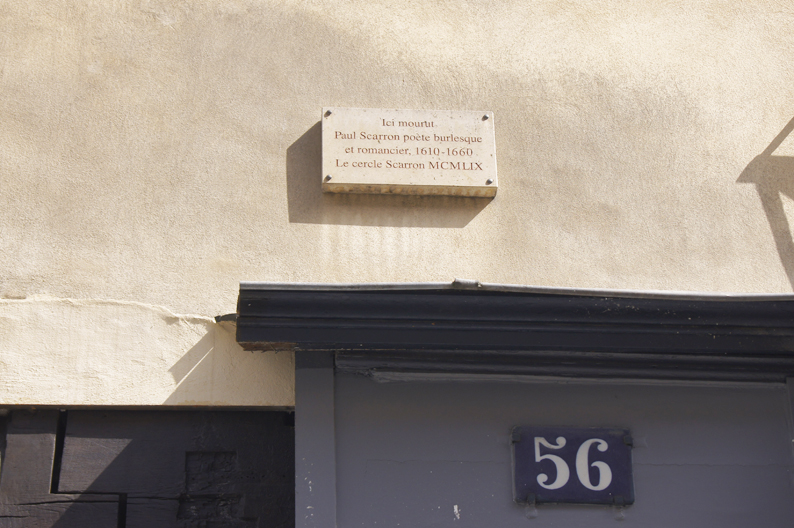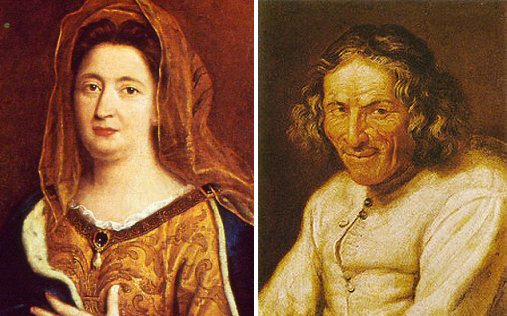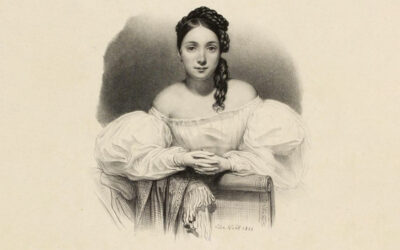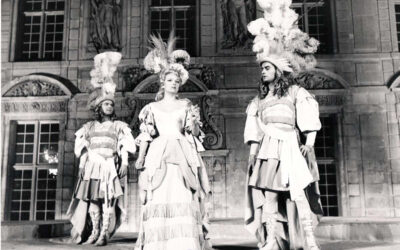

It is here, at 56 rue de Turenne, right next to the Turenne primary school, that the writer, poet and playwright lived
Paul Scarron, squire and lord of Fougerest, Beauvais and La Rivière.
Contemporary with the reign of Louis XIII and the beginning of that of Louis XIV, his best-known work is The Comic Novel.
A defrocked religious man, this saucy Maraisian is also a big user of opium.
According to legend, he became disabled following an icy bath in the Seine while he was drunk. More likely his infirmity was due to an inflammatory disease of the spine.
In any case, Scarron holds a salon in his private mansion in the Marais.
In 1652, he married Françoise d'Aubigné, a very poor orphan. Aged sixteen, she is twenty-five years his junior.

The couple receives the All-Paris. Beautiful minds flock to rue de Turenne. Among them: Madame de La Fayette, Madame de Montespan (mistress of Louis XIV), Ninon de Lenclos, Abbé Choisy, Marshal d'Albret, Count de Grammont, the Scudérys etc.
When he died, Scarron was buried at the Saint-Gervais church, in what is now the 4th arrondissement, very close to the Seine.
His widow was then twenty-five years old. Nine years later, here she is governess of the illegitimate children of the king and Madame de Montespan. In the meantime she retired to the convent of the Hospitalières on Place Royale, at number 35, now rue des Tournelles.
After the death of Queen Marie-Thérèse of Austria and the disgrace of Madame de Montespan, the widow Scarron became Madame de Maintenon, following the purchase of the castle of the same name.
She secretly married Louis XIV.
Becoming devout and austere, she is very influential with the aging king.
Little liked by the royal family, the court and the people, she is credited with having pushed Louis XIV to revoke the Edict of Nantes (which granted freedom of worship to Protestants) in 1685.
A decision considered one of the errors of his reign.
In 1715, a few days before the death of the king, Madame de Maintenon moved into the Royal House of Saint-Louis, the boarding school that she created in 1686 with a view to educating young noble and penniless girls. She died there on April 15, 1719.
La Maintenon would also have encouraged the king to initiate the Code Noir, an iniquitous text which governed the lives of slaves in the French colonies.
Text: Katia Barillot
Photos: ©Anaïs Costet
FOR PASSIONATES OFUS
Juliette Drouet actress, muse and mistress of Victor Hugo
At 14 rue Sainte-Anastase, from 1836 to 45 and at 12 from 1845 to 48, a few hundred meters from Place des Vosges, lived the muse and lover of Victor Hugo, Juliette Drouet née Julienne Gauvain.
Rue Vieille-du-Temple: the fabulous construction site restarts
A luxury hotel will be created at the end of the work. On the ground floor, the old stables and carriage houses will house the restaurant on the large courtyard, while the first courtyard, on rue Vieille-du-Temple, will feature two businesses continuing its 19th century layout.
The Marais festival, a fabulous story
The Festival du Marais dates back to a time that those under 60 cannot know. However, this leading artistic event was for a long time one of the most popular cultural events in the capital. For a quarter of a century, from 1962 to 1987, this unique festival…
NOW ON THE MOOD MARSH
The best tattoo parlors in Marais
Tattooing, an age-old practice, has long been the prerogative of convicts, dock workers, the underworld and sailors. Although it has become democratized, now affecting all profiles and concerning one in five French people, including 16% women compared to 10% men, it still remains taboo due to its definitive and transgressive nature.
Juliette Drouet actress, muse and mistress of Victor Hugo
At 14 rue Sainte-Anastase, from 1836 to 45 and at 12 from 1845 to 48, a few hundred meters from Place des Vosges, lived the muse and lover of Victor Hugo, Juliette Drouet née Julienne Gauvain.
Piccola Mia, the pizzas of the Republic
On the Place de la République, a brasserie with Italian accents has just opened, which quickly made people forget the old Pizza Pino. Welcome to Piccola Mia, the fruit of the joyful encounter between Italian chef Denny Imbroisi, pizza chef Julien Serri and mixologist Matthias Giroud who creates a creative cocktail menu.






